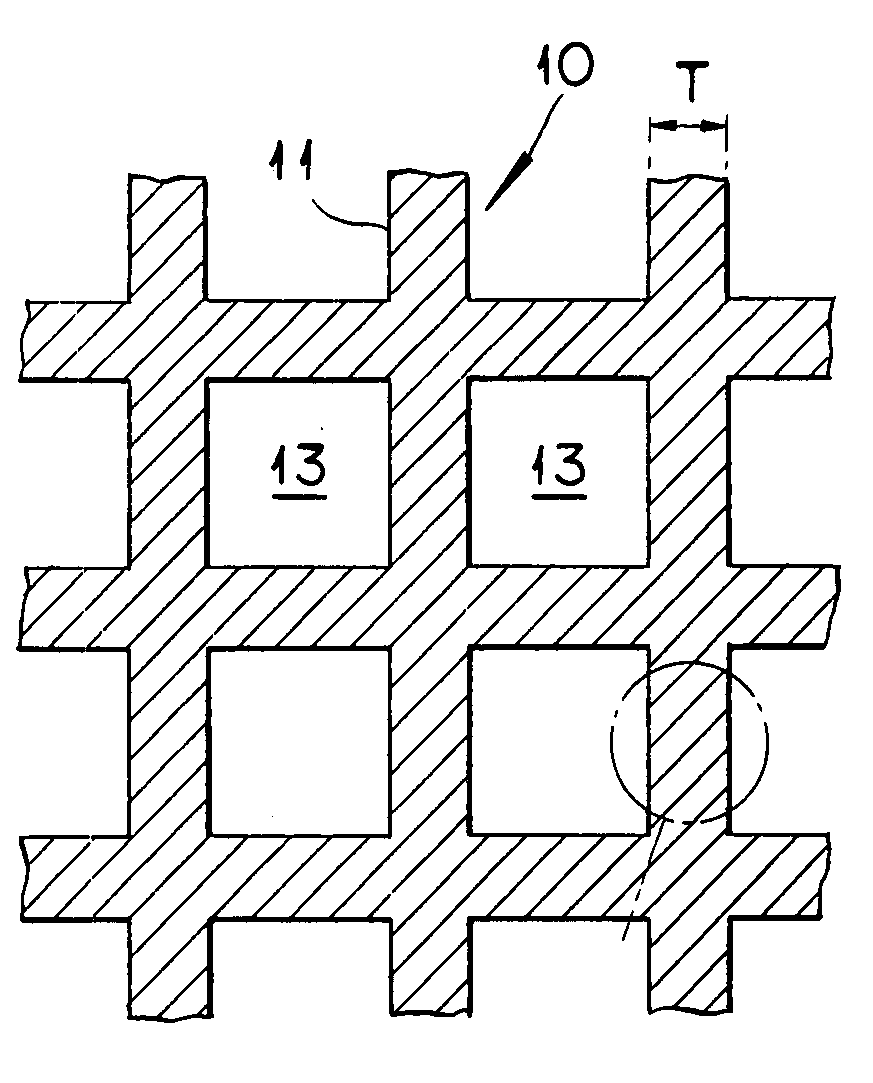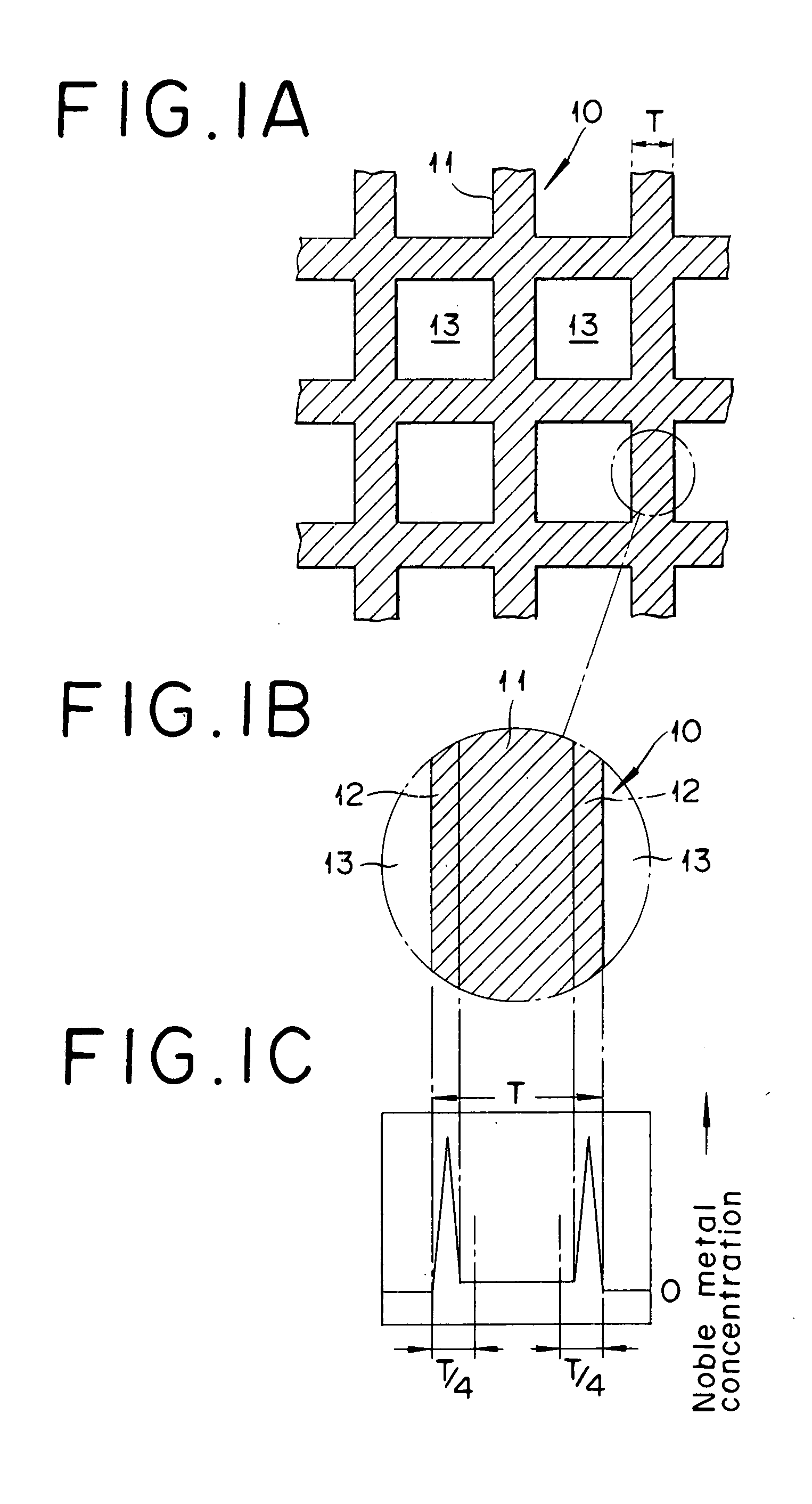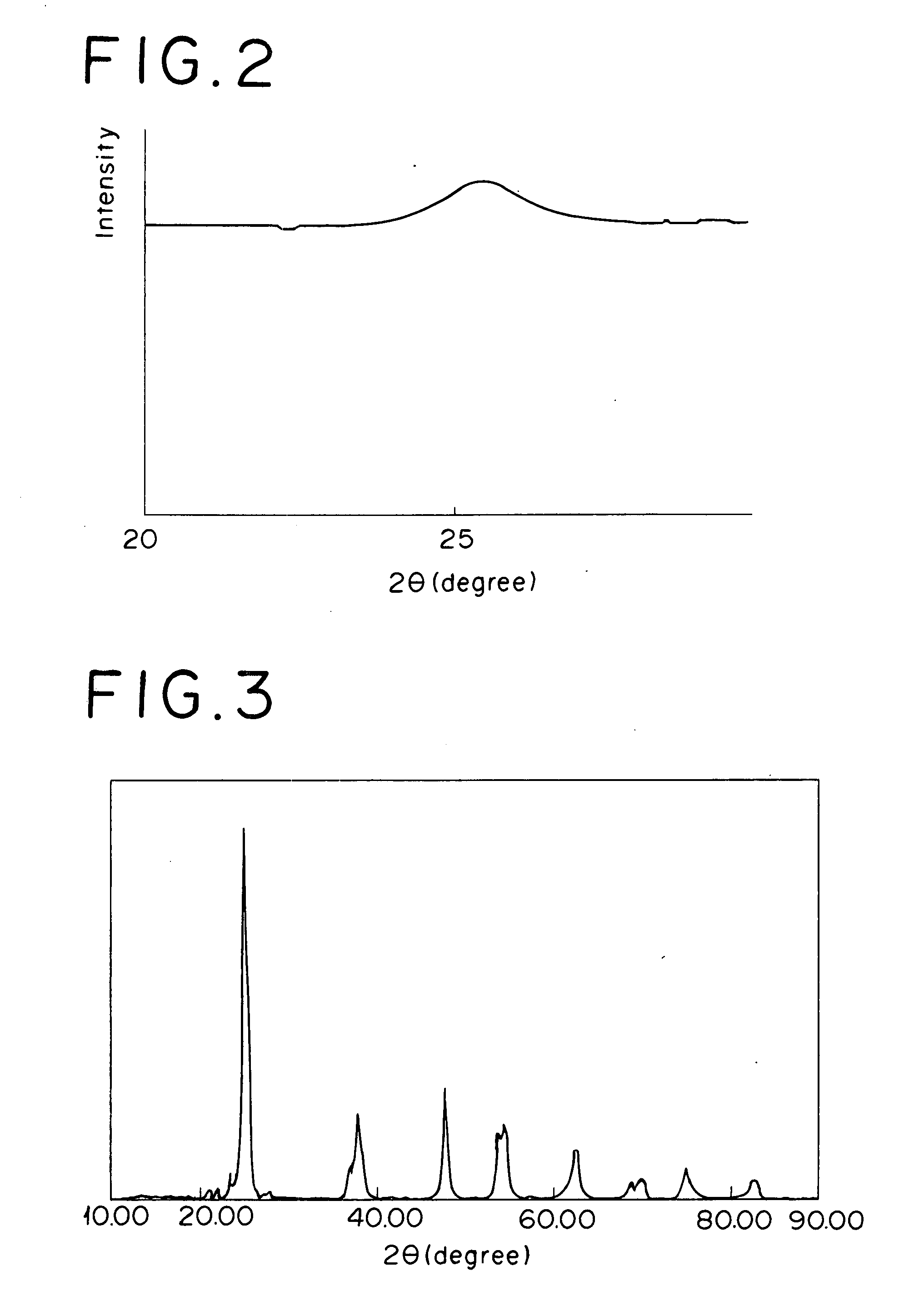Catalyst for Removing Oxygen and Method for Removing Oxygen Using the Same Catalyst
a catalyst and catalyst technology, applied in the direction of physical/chemical process catalysts, metal/metal-oxide/metal-hydroxide catalysts, separation processes, etc., can solve the problems of reducing performance and insufficient oxygen removal performance, and achieve the effect of removing oxygen in gas highly efficiently and stably
- Summary
- Abstract
- Description
- Claims
- Application Information
AI Technical Summary
Benefits of technology
Problems solved by technology
Method used
Image
Examples
example 1
Catalyst Preparation
[0036]Into a mixed solution of 7.1 kg of silica sol (containing 20% by mass as SiO2) and 140 kg of ammonia water (containing 10% by mass of NH3), 60 liter of an aqueous sulfuric acid solution of titanyl sulfate (containing 125 g / liter as TiO2, and 0.55 kg / liter as H2SO4) was gradually dropped under sufficient stirring to generate precipitate. This slurry was subjected to aging, filtering and washing, and subsequently drying at 150° C. for 10 hours. The resultant substance was calcined at 500° C. for 6 hours, and further crushed using a hammer mill to yield a powder A. The powder A had an average particle diameter of 16 μm. In an X-ray diffraction chart of the powder A, clear characteristic peak derived from TiO2 or SiO2 was not confirmed, and thus the powder was confirmed to be a composite oxide of titanium and silicon (a Ti—Si composite oxide) having an amorphous fine structure, shown by a broad diffraction peak (see FIG. 1).
[0037]To 2 kg of the above powder A, ...
example 2
Catalyst Preparation
[0043]Into a mixed solution of 12 kg of an aqueous solution of ammonium metatungstate (containing 50% by mass as WO3) into 400 kg of ammonia water (containing 25% by mass of NH3) and 8 kg of water, 779 liter of an aqueous sulfuric acid solution of titanyl sulfate (containing 70 g / liter as TiO2, and 310 kg / liter as H2SO4) was gradually dropped under sufficient stirring to generate precipitate. This slurry was subjected to aging, filtering and washing, and further drying at 150° C. for 10 hours. The resultant substance was calcinated at 600° C. for 3 hours, and further crushed using a hammer mill to yield a titanium-tungsten mixed oxide powder B (a Ti—W mixed oxide with an average particle diameter of 19 μm, and TiO2:WO3=90:10, as molar ratio). In an X-ray diffraction chart of the powder B, clear characteristic peak derived from TiO2 and WO3 was confirmed at 2θ=23.50 and 2θ=22° (see FIG. 2).
[0044]To a mixture of 18 kg of the above powder B and 2 kg of the powder A ...
example 3
Catalyst Preparation
[0048]To 2 kg of the above powder B obtained in Example 2, starch, as a compacting auxiliary agent, and water were added and mixed, and kneaded using a kneader. Water was further added to the resultant kneaded substance to make slurry using a mixer, and a honeycomb-type cordierite carrier (with an outer dimension of 150 mm×150 mm×50 mm length, a mesh opening of 1.4 mm, and a thickness of 0.4 mm), which was prepared in advance, was immersed in the slurry. After that, the carrier was pulled up and subjected to drying at 80° C., and calcining at 550° C. for 3 hours. Supporting ratio of the Ti—W mixed oxide at this time was 8% by mass.
[0049]This supported substance was immersed in a mixed solution of an aqueous solution of rhodium nitrate and an aqueous solution of dinitrodiamine platinum, and then subjected to drying at 150° C. for 3 hours, and subsequently calcining at 500° C. for 2 hours under air atmosphere to yield a catalyst C. The catalyst C had a composition ...
PUM
| Property | Measurement | Unit |
|---|---|---|
| particle diameter | aaaaa | aaaaa |
| temperature | aaaaa | aaaaa |
| temperature | aaaaa | aaaaa |
Abstract
Description
Claims
Application Information
 Login to View More
Login to View More - R&D
- Intellectual Property
- Life Sciences
- Materials
- Tech Scout
- Unparalleled Data Quality
- Higher Quality Content
- 60% Fewer Hallucinations
Browse by: Latest US Patents, China's latest patents, Technical Efficacy Thesaurus, Application Domain, Technology Topic, Popular Technical Reports.
© 2025 PatSnap. All rights reserved.Legal|Privacy policy|Modern Slavery Act Transparency Statement|Sitemap|About US| Contact US: help@patsnap.com



